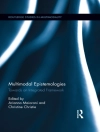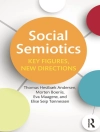As you are reading this, you are finding yourself in the ubiquitous public sphere that is the Web. Ubiquitous, and yet not universally accessible. This volume addresses this dilemma of the public sphere, which is by definition open to everyone but in practice often excludes particular groups of people in particular societies at particular points in time. The guiding questions for this collection of articles are therefore: Who has access to the public sphere? How is this access enabled or disabled? Under what conditions is it granted or withheld, and by whom?
We regard the public sphere as the nodal point for the discourses of business, politics and media, and this basic assumption is also s reflected in the structure of the volume. Each of these three macro-topics comprises chapters by international scholars from a variety of disciplines and research traditions who each combine up-to-date overviews of the relevant literature with their own cutting-edge research into aspects of different public spheres such as corporate promotional communication, political rhetoric or genre features of electronic mass media.
The broad scope of the volume is perhaps best reflected in a comprehensive discussion of communication technologies ranging from conventional spoken and written formats such as company brochures, political speeches and TV shows to emerging ones like customer chat forums, political blogs and text messaging.
Due to the books’ wide scope, its interdisciplinary approach and its clear structure, we are sure that whether you work in communication and media studies, linguistics, political science, sociology or marketing, you will find this handbook an invaluable guide offering state-of-the -art literature reviews and exciting new research in your field and adjacent areas.
Mục lục
HAL 4 – Handbook of Language and Communication in the Public Sphere
Table of Contents
Introduction: Shifting boundaries and emergent public spheres (Veronika Koller and Ruth Wodak)
Part A: Theoretical Foundations
1. Language, communication and the public sphere: definitions (Scott Wright)
2. Public space, common goods, and private interests: emergent definitions in globally mediated humanity (Phil Graham)
3. Media discourse and the naturalisation of categories (Nick Couldry)
4. Language, communication and the public sphere: a feminist critical discourse perspective (Michelle M. Lazar)
Part B: Language and Communication in Business
5. Advertisements and Public Relations (Guy Cook)
6. Language and communication design in the marketplace (Gerlinde Mautner)
7. Identity, image, impression: corporate self-promotion and public reactions (Veronika Koller)
8. Creating a ‘green’ image in the public sphere: corporate environmental reports in a genre perspective (Aud Solbjørg Skulstad)
9. Britain™ and ‘corporate’ national identity (Lidia De Michelis)
Part C: Language and Communication in Politics
10. Political terminology (Paul Chilton)
11. Rhetoric of political speeches (Martin Reisigl)
12. Dissemination and implementation of political concepts (Florian Oberhuber)
13. The contribution of critical linguistics to the analysis of discriminatory prejudices and stereotypes in the language of politics (Ruth Wodak)
14. Tabloidisation of political communication in the public sphere (Werner Holly)
Part D: Language and Communication in the Media
15. News genres (Theo van Leeuwen)
16. Specific genre features of new mass media (Helmut Gruber)
17. Specific debate formats of mass media (Kay Richardson)
18. The sounds of silence in the media: censorship and self-censorship (Christine Anthonissen)
19. Technology, Democracy and Participation in Space (Rodney Jones)
Giới thiệu về tác giả
Veronika Koller & Ruth Wodak, Lancaster University, UK.












